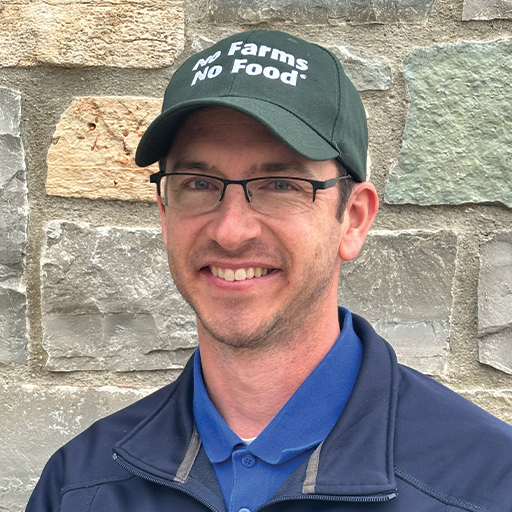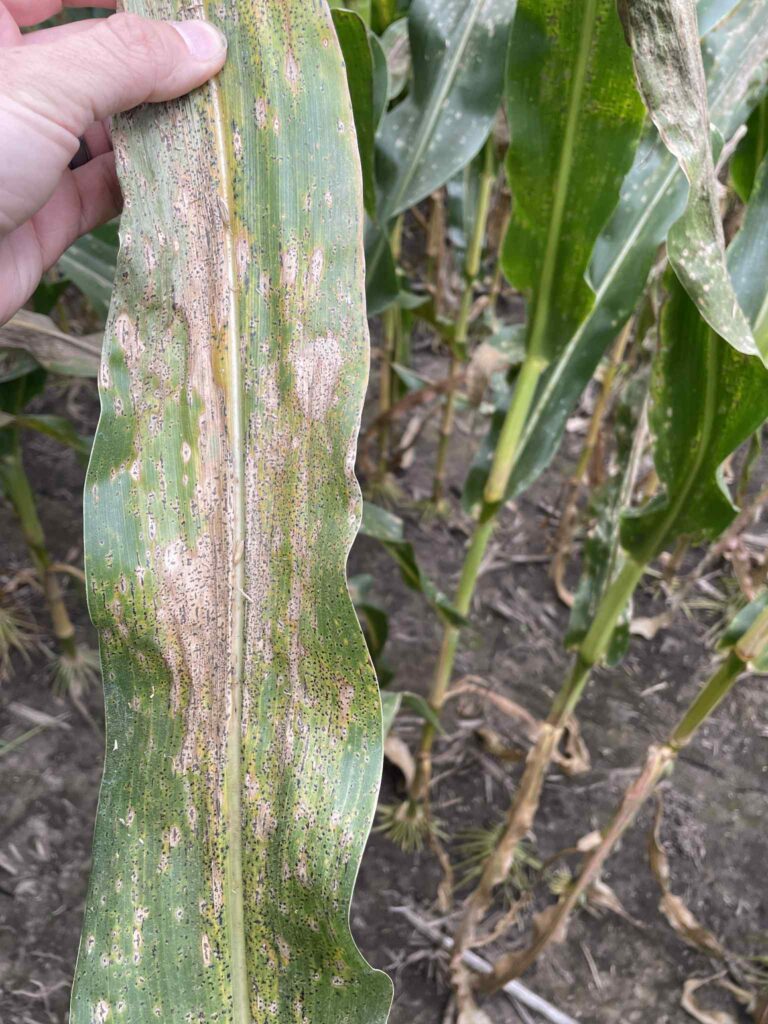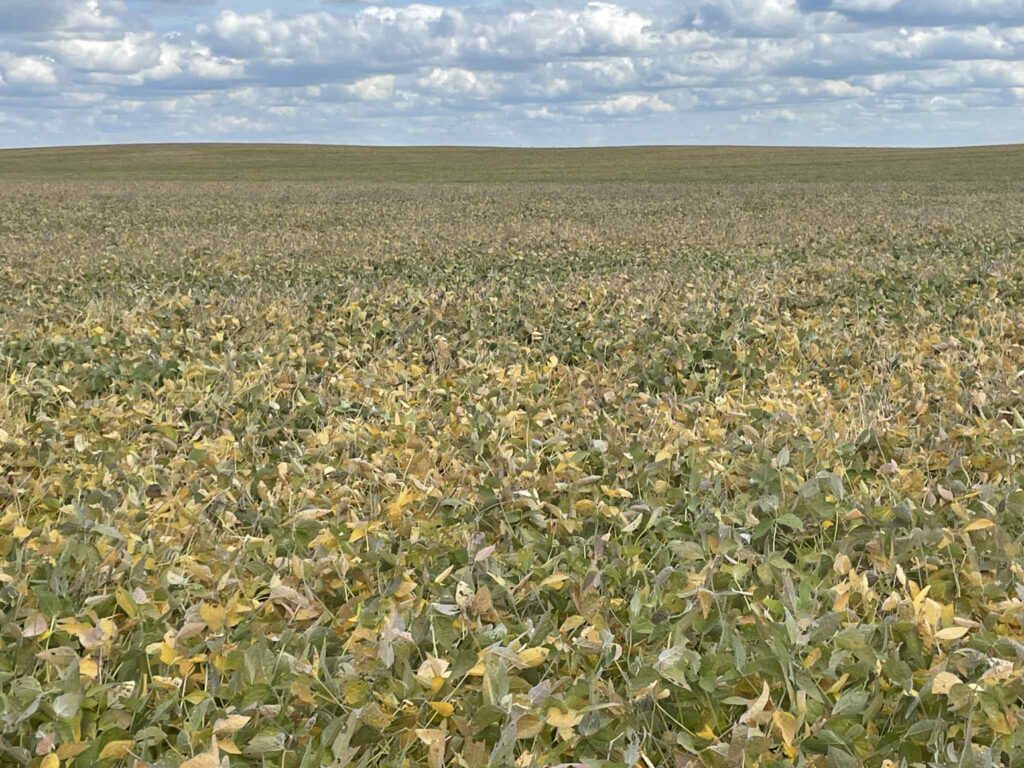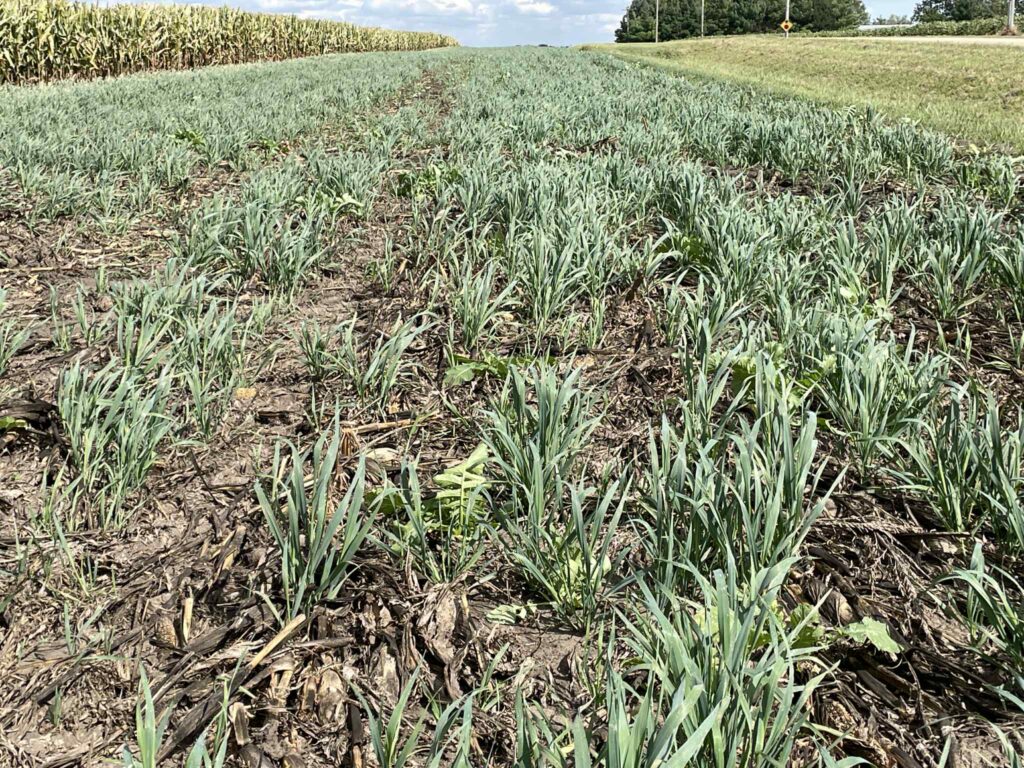
Torey Colburn
Soy Envoy
tcolburn@farmland.org

Torey Colburn
Soy Envoy
tcolburn@farmland.org
TOREY COLBURN UPDATES



Onward! Corn and soybeans both are marching toward season’s end. Fields in my area are really starting to have that “late-season” look this week. Much cooler temperatures arrived on 9/3, and daytime highs in the mid-60s really made it feel like fall. Walking through corn, I’ve noticed a significant uptick in foliar disease across the board. Some fields are showing quite a bit of GLS, and others NCLB, on and above the ear. Most notable to me, however, was the amount of late tar spot I’ve seen. Natural leaf firing from the bottom is a normal part of filling out the ear, but there’s a difference between that and earlier-than-normal leaf death from the culmination of tar spot plus two to three other leaf diseases. I’ve been in some fields that really need to be watched closely as harvest approaches, and I hope they don’t get a significant wind event. Stalks in the worst fields are already weak and prone to breaking just by crossing rows. Most ears look good and are well into dent stage, with milk lines ranging from ¼ to ¾. I expect black layer to be a couple of weeks away yet in most fields.
Soybeans are mostly into the full seed stage, and you can see the leaves beginning to yellow. Early-maturity fields are into leaf drop now, and some are probably 50–60% dropped. Pockets of Sudden Death Syndrome are beginning to show up a little more, but it does not appear to be as widespread as in some years. I have not seen any red crown rot in my area. Cooler overnight temperatures have led to some very heavy dews in the mornings. Lingering moisture on green leaves, plus a blue sky and sunshine, has caused a fair amount of sunscald on the bean leaves, but at this point I would not expect that to have any significant impact on the plant.
Cooler than normal — highs in the mid-60s for the next few days — then we’re expecting to be back to the mid-70s and even some 80s.
We caught a couple tenths earlier this week. I think we are mostly set on moisture but another inch or so would be alright!
Currently dry on top, but moist in the rootzone.
Some of the seed corn in my area has been sprayed with defol when temperatures were still warm. This helps control seed size and facilitates a more efficient harvest schedule.
I’ve also seen some aerial cover crop seeding taking place in closed-out seed corn.
R6 – Full Seed
R5 – Dent with milk line descending
NCLB, GLS, and tar spot in corn. SDS and small amounts of white mold in soybeans.
Minor lodging from wind – visible in both corn and soybeans.
Farmers who will be flying cover crops into standing soybeans are getting close to pulling the trigger, and some have already done so. Given the moisture situation in the central and southern parts of the state, I would caution farmers who are planning or hoping to have cover crops flown on. Remember, soil moisture is critical for cover crop establishment, and the seed-to-soil contact from an aerial broadcast is low compared to direct seeding methods.
Don’t make applications until conditions allow the best chance for success. If you need to pull a species out of the mix or make a substitution because it gets late, don’t be afraid to do so. Talk to your seed reps and applicators, and make adjustments to your plans if necessary.


 and then
and then